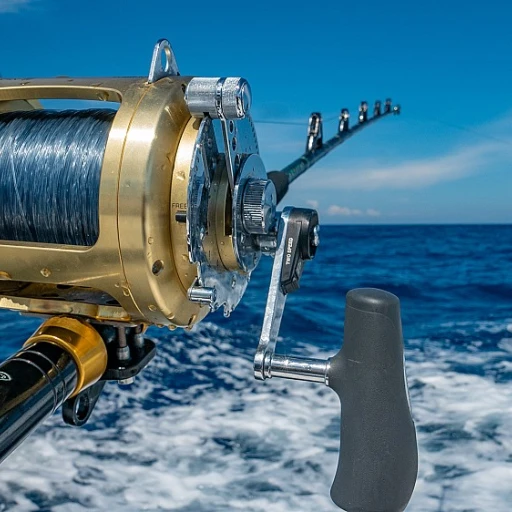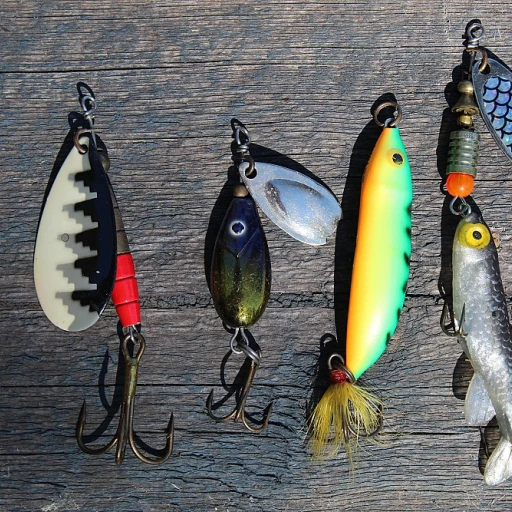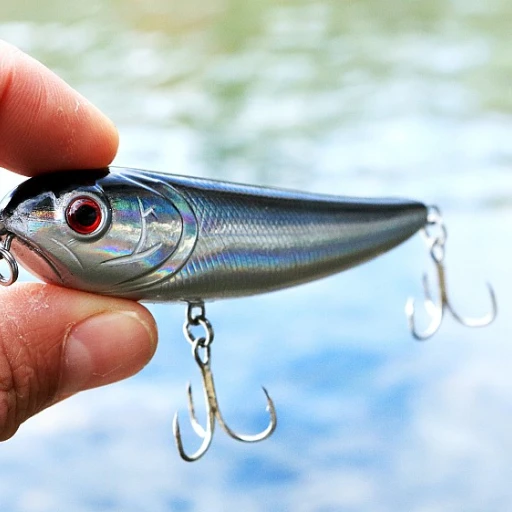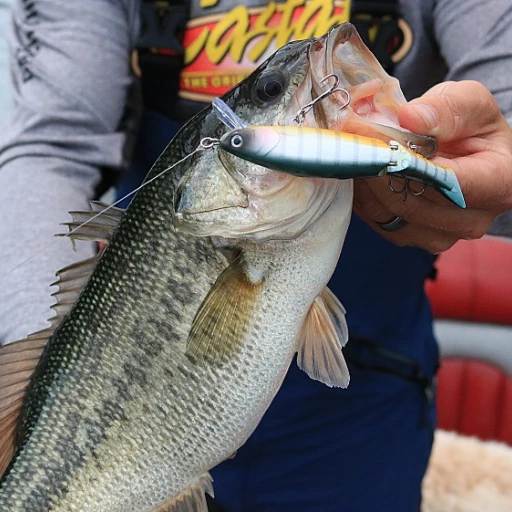
Record-breaking catches: the biggest fish ever caught
Around the world in record-breaking catches
When we talk about the biggest fish ever caught, a myriad of impressive catches come to mind. From saltwater giants to freshwater behemoths, the stories of these remarkable captures captivate anglers and enthusiasts alike.
Unbelievable tales from the deep
One of the most legendary records includes the Atlantic blue marlin, caught off the coast of Peru. Imagine hauling an enormous fish that weighed thousands of pounds, showcasing the sheer strength and stamina required for such a feat.
Inland giants: the impact of freshwater species
But it’s not just the oceans that hold the record-breaking treasures. The Mekong giant catfish reigns supreme among freshwater giants. With specimens weighing in at over 600 pounds, this species has fascinated scientists and fishermen alike.
Mighty tuna tales
The bluefin tuna also commands respect, with Ken Fraser’s 1,496-pound catch in Nova Scotia, Canada, still holding the record as the largest tuna ever landed. Fraser’s story is a testament to the endurance and skill required to reel in such a powerful game fish.
Frozen depths: the Greenland shark
Let’s not forget the mysterious depths where the Greenland shark roams. Terje Nordvedt’s record-breaking capture stands as a monumental achievement, shedding light on this elusive species.
A historic encounter
In Ceduna, Australia, Alfred Dean reeled in a massive tiger shark weighing 1,785 pounds in 1959. This remarkable catch has stood the test of time and remains one of the most iconic fishing records.
More wonders of the sea
Other notable giants include the great white sharks and the colossal reef manta rays, both impressive in their stature and the challenge they present to anglers. The International Game Fish Association (IGFA) plays a crucial role in documenting these extraordinary achievements.
An evolving leaderboard
As tackle and techniques evolve, the potential for future record-breaking fish remains thrilling. Whether in the deep blue seas or vast freshwater rivers, the hunt for the biggest fish ever caught continues to inspire and challenge anglers worldwide.
For more giant fish tales and detailed insights, check out the biggest goliath grouper ever caught.
The story of Ken Fraser and his giant bluefin tuna
Ken Fraser's remarkable bluefin tuna catch
When talking about fishing legends, Ken Fraser's name inevitably comes up. Back in 1979, Fraser set a mark that continues to awe anglers around the world. On October 26 of that year, he caught a record-breaking bluefin tuna weighing an astonishing 1,496 pounds off Nova Scotia, Canada.
The day of the catch
Fraser used mackerel as bait and fought with the giant tuna for over 45 minutes. His battle with the fish became an emblem of endurance and skill. Using a 130-pound test line, Fraser showcased not just strength, but meticulous technique and countless hours invested in perfecting his fishing skills. This achievement is documented under the International Game Fish Association (IGFA) records.
Impact on the fishing community
The record-setter bluefin tuna has since sparked enormous interest in deep-sea fishing, specifically targeting giant bluefin tunas. Nova Scotia became a hotspot for ambitious anglers aiming to break this historic record, though none has yet succeeded in toppling Fraser’s monumental feat.
Ken Fraser's legacy
For many, Fraser’s catch isn’t just about the weight of the fish but the inspiration it provided to generations of anglers. Ken Fraser's name has become synonymous with the pinnacle of fishing success, and his story continually inspires both seasoned and novice fishermen.
For more in-depth insights into this legendary catch, fans can read this detailed account.
Mekong giant catfish: the freshwater behemoth
The freshwater behemoth
The Mekong giant catfish stands as a testament to nature's fascinating extremes, especially within the realm of freshwater fish. Known scientifically as Pangasianodon gigas, this species holds the title for the largest freshwater fish ever caught, according to verified records by the International Game Fish Association (IGFA). In 2005, a group of Thai fishermen made headlines when they captured a colossal Mekong giant catfish weighing an astonishing 646 pounds (293 kilograms). This catch, which took place in northern Thailand, was measured at nearly nine feet long. The Mekong River, which winds through multiple Southeast Asian countries, is home to this gigantic species, making it a hotspot for anglers seeking the thrill of landing one of these freshwater giants. Several studies, such as those conducted by the World Wildlife Fund and regional fisheries departments, emphasize the critical role of the Mekong giant catfish in the ecosystem. Unfortunately, the species faces severe threats due to overfishing and habitat destruction, making conservation efforts crucial. learn more about the giants of freshwater to deepen your understanding of freshwater behemoths like the Mekong giant catfish.The colossal Atlantic blue marlin of Cabo Blanco, Peru
The colossal catch off cabo blanco
If there's a place on Earth synonymous with giant fish and legendary catches, it's Cabo Blanco, Peru. This remote fishing hotspot has etched its name in history thanks to the staggering Atlantic blue marlin caught by some of the most passionate anglers. One particular catch stands out in the annals of fishing history: a mind-boggling marlin that weighed 1,560 pounds, caught on August 4, 1953, by Alfred C. Glassell Jr. This astonishing catch still holds the IGFA world record for the largest blue marlin ever caught.
Glassell, an American oilman and avid angler, wasn't new to the waters of Cabo Blanco. Every trip to the Peruvian coast meant another opportunity to reel in a game fish worthy of the record books. His persistence paid off when he hooked this gigantic marlin. The battle between man and fish was fierce and long, lasting more than an hour, with the marlin proving to be an adversary worthy of its reputation.
A hotspot for giants
But what makes Cabo Blanco such fertile fishing ground for these marine behemoths? The answer lies in its unique geographical features. The confluence of the cold Humboldt current and the warm currents from the Amazon creates a rich feeding ground teeming with baitfish. This, in turn, attracts massive predators like the Atlantic blue marlin.
Many legendary anglers, including Hemingway, have flocked to Cabo Blanco, hoping to break Glassell's record. The abundance and size of the marlins in these waters make it a bucket-list destination for big-game anglers worldwide. The tales from these waters are filled with triumphs and heartbreaks, often narrated over drinks in local bars teeming with fishing enthusiasts.
Sustaining the legacy
While Cabo Blanco remains a fabled location, the pressure on the fish populations has increased over the years due to commercial fishing and climate change. Conservation efforts are crucial in ensuring that these waters continue to be the birthplace of record-breaking catches. The International Game Fish Association (IGFA) plays a pivotal role in promoting sustainable fishing practices and documenting these monumental catches, keeping the spirit of fair sport fishing alive.
Records like Glassell's monumental marlin not only highlight the pinnacle of the sport but also remind us of the rich history and the need to preserve these marine ecosystems for future generations. Whether you're an angler or a spectator, the legacy of Cabo Blanco's giants is a testament to the unending chase of record-breaking catches in the fishing community.

- + Complete starter kit including fishing pole, reel, net, and buckets
- + Portable and telescopic design
- + Great for beginners, suitable for boys and girls
- + Attractive colors (Blue + Orange)
- + Encourages outdoor activity
Terje Nordvedt's record-breaking Greenland shark
Terje Nordvedt's Arctic feat
In the icy waters of Greenland, a remarkable feat of fishing prowess unfolded. On October 25, 1987, Norwegian angler Terje Nordvedt made headlines by catching one of the largest Greenland sharks ever recorded. This behemoth weighed an astonishing 1,708 pounds and measured 16 feet, making it one of the most noteworthy catches in the history of recreational fishing.
A battle of patience and endurance
Nordvedt's encounter with the Greenland shark is a tale of perseverance and sheer determination. Known for being slow-moving but deceptively strong, Greenland sharks (Somniosus microcephalus) are among the longest-living vertebrates, with some estimates suggesting they can live up to 400 years. The key to beating such a giant fish lies in patience, as these sharks can drag out a fight for several hours. Nordvedt's epic struggle with the massive shark was no different, lasting over an excruciating eight hours before he managed to reel it in.
The silent giants of the Arctic
Greenland sharks are shrouded in mystery, often referred to as the 'silent giants' of the Arctic. They inhabit the cold waters of the North Atlantic and Arctic Oceans, typically preferring depths of 200 to 600 meters. Their elusive nature makes them a prized catch amongst anglers, and Nordvedt's achievement in catching such a specimen is a testament to his fishing skills and knowledge of the species.
Controversies and conservation
While Terje Nordvedt's catch was celebrated, it also stirred conversations about the conservation status of Greenland sharks. Classified as near-threatened by the International Union for Conservation of Nature (IUCN), these sharks face threats from accidental bycatch and the commercial fishing industry. The debate around sportfishing and conservation continues to grow, with organizations like the International Game Fish Association (IGFA) playing a pivotal role in advocating for sustainable fishing practices.
A lasting legacy
Terje Nordvedt's Greenland shark remains a benchmark in the world of fishing records. The story of his extraordinary catch has inspired countless anglers to pursue their dreams of landing record-breaking fish while also igniting discussions on the importance of preserving marine biodiversity for future generations.
The elusive black marlin: a game fish legend
The allure of the black marlin: an angler's ultimate challenge
When we talk about record-breaking catches, the black marlin stands out as an icon of game fishing. Known for their immense strength and speed, black marlins are among the most sought-after targets for anglers around the globe. These magnificent creatures, primarily found in tropical and subtropical waters, are valued for their sheer size and challenging nature.
A prime example of the black marlin's legendary status is Alfred Dean's catch in the 1950s. On August 4, 1953, Dean reeled in a black marlin off the coast of Ceduna, Australia, that weighed an astonishing 1,560 pounds (707 kg). This record, as reported by the International Game Fish Association (IGFA), remains one of the most impressive feats in sport fishing history.
Another remarkable catch includes the Atlantic blue marlin caught off Cabo Blanco, Peru, highlighting how different species can captivate the fishing community with their sheer size and power. These marlins offer a thrilling experience, stretching the skills of even the most experienced anglers to their limits.
The pursuit of a dream catch
Fishing for black marlin isn't just about the battle; it's also about the journey and the tales that come along with it. Stories of epic struggles, broken lines, and near misses circulate among anglers who pride themselves on their skill and perseverance. Renowned fishing spots like Australia's Great Barrier Reef, Hawaii, and parts of Brazil are hotspots for these game fish, with many fishing enthusiasts targeting these areas for a shot at making history.
The thrill and challenge of catching a black marlin are brilliantly encapsulated in these tales. Anglers like Terje Nordvedt, who previously held the record for the largest Greenland shark, also find the black marlin's pull irresistible. The passion for landing such a giant fish fuels expeditions and dreams, keeping the spirit of adventure and discovery alive in the fishing community.
Records and recognition: the IGFA's crucial role
The IGFA's rigorous documentation and measurement standards play a vital role in recognizing these extraordinary catches. Anglers around the world rely on the IGFA's credibility to validate their achievements, ensuring that records like Alfred Dean's black marlin catch remain undisputed benchmarks.
Fishing enthusiasts continue to push the boundaries, always on the lookout for the next big catch. With the IGFA overseeing the official records, the world of sport fishing remains vibrant and competitive, celebrating both the legendary past and the promising future of game fish records.
IGFA's role in documenting fishing records
The International Game Fish Association (IGFA): Keeping the records straight
The International Game Fish Association, or IGFA, is the backbone of the competitive fishing community, tirelessly logging and verifying fishing records from around the globe. This organization's meticulous tracking system ensures that every record-breaking catch, from the bluefin tuna caught by Ken Fraser to the monstrous Greenland shark reeled in by Terje Nordvedt, is accurately documented and authenticated. Each entry undergoes a rigorous process, including the verification of the angler's equipment, the species of fish, and the weight – all crucial for maintaining the integrity of the records.What's in a record?
You might think capturing a record-breaking fish is as simple as casting a line, but you'd be wrong. Each claim to a world record requires a lot of proof and scrutiny. From video footage to sworn affidavits, everything is considered by the IGFA to ensure that the record is legitimate. For example, the bluefin tuna Ken Fraser caught back in 1979, which weighed an astounding 1,496 pounds, had to be thoroughly documented and reviewed before being recognized as the biggest catch of its kind.Game fish legends and the Anachronous
Anglers all over the globe compete not just for sport, but for their names to be etched in the annals of fishing history. Legendary fishing spots like Cabo Blanco in Peru, where the colossal Atlantic blue marlin was caught, become hallowed grounds thanks to the IGFA’s commitment to chronological documentation of fishing feats. The same goes for freshwater giants, such as the elusive Mekong giant catfish, often hailed for its sheer size within the serene waters of Thailand.Past records guiding future prospects
The IGFA not only looks back but also helps pave the way for future fishing endeavors. By maintaining such a detailed repository of data, anglers can learn from past exploits and prepare to make their own bids for the record books. This has been seen with species like the black marlin, a game fish legend, where knowing the previous records motivates anglers to head out to the waters with dreams of setting new ones. The unsung heroes at IGFA make sure each of these aspirations is met with the highest standards of verifiable proof. Maintaining a global repository of fishing records is no small feat. The IGFA continues to be the gold standard for record-keeping in the angling community, ensuring that the most legendary catches are forever remembered and celebrated.Future prospects: potential record-breaking fish
Scientific advancements and technology unlocking new possibilities
Modern technology and scientific advancements could make it possible to discover even larger fish species or break existing records. Technological progress gives us better detection tools, improved fishing tackle and gear, and allows for deeper dives into uncharted waters. According to the International Game Fish Association (IGFA), the increasing accuracy of sonar and satellite imaging technology has significantly enhanced our ability to explore and understand marine habitats.For instance, the potential exists for finding enormous yet undiscovered species in the deep sea. Dr. Sylvia Earle, a renowned oceanographer, noted that more than 80% of the world's oceans remain unexplored, pointing out the enormous unknown potential beneath the waves. By utilizing submarines and remote-operated vehicles (ROVs), researchers are venturing into previously inaccessible depths to uncover what lies beneath.
Genetic research and potential leviathans
Genetic research is another promising area, with the possibility of identifying and studying "super fish" that could smash existing records. Referencing a 2019 report by the National Geographic Society, advancements in genetic technologies have allowed scientists to study fish at a molecular level, identifying genes that might contribute to exceptional growth rates or longevity. By sequencing the genomes of large fish species, researchers can pinpoint what exactly makes these giants so enormous and use this knowledge for conservation and fishing practices.Environmental factors influencing future catches
Environmental issues, such as climate change, also play a critical role in the potential for record-breaking catches. Changes in sea temperatures and ocean currents can impact fish size and distribution. The National Oceanic and Atmospheric Administration (NOAA) has found that some fish species are migrating to new areas as their traditional habitats change. This, in turn, means that anglers might find bigger catches in unexpected places.Additionally, conservation efforts are vital to the future of these giant fish. Organizations such as the IGFA actively promote sustainable fishing practices to ensure that future generations can experience the thrill of catching these mammoth creatures. As Dr. Barbara Block, a marine biologist, emphasizes, "Sustainable fishing practices are not just about preserving fish populations, but also about maintaining the balance of entire marine ecosystems."
To conclude, while the stories of Ken Fraser's giant bluefin tuna, Terje Nordvedt's Greenland shark, and the elusive black marlin are legendary, the future holds even greater promise. With advancements in technology, genetic research, and a commitment to environmental stewardship, there's no telling what record-breaking catch awaits just beyond the horizon. Keen to dive into the history of record-breaking fish? Check out what's the biggest fish ever caught for more thrilling tales.


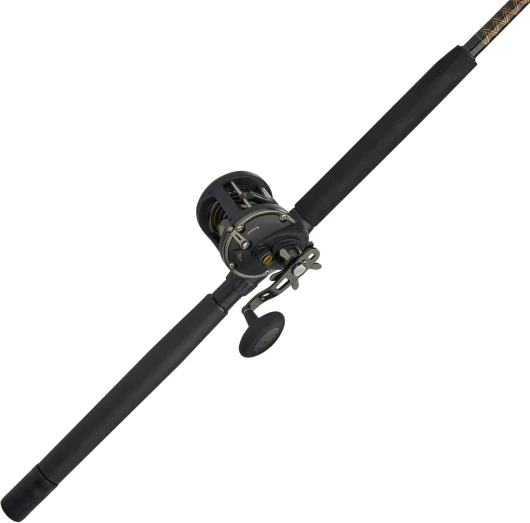

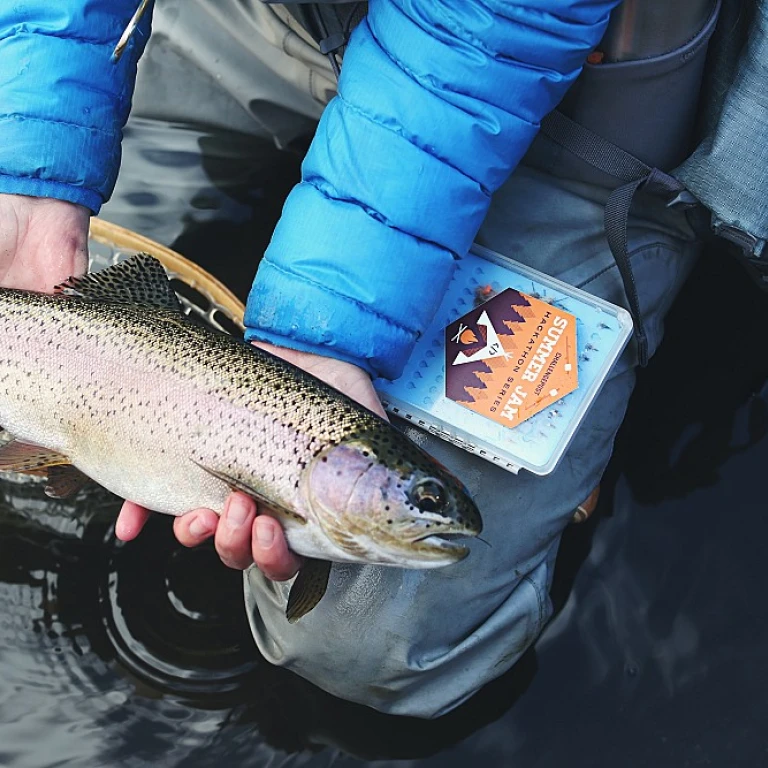


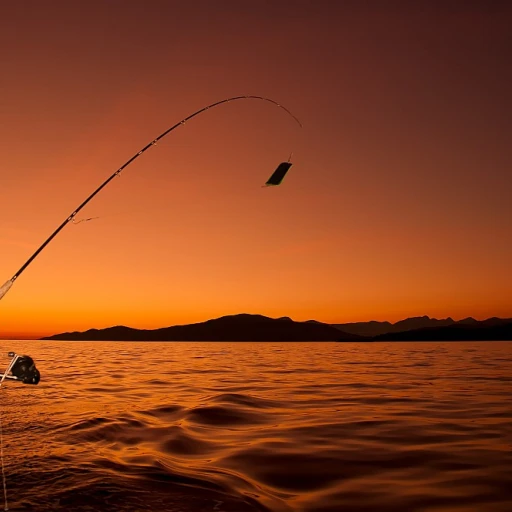
-large-teaser.webp)
-large-teaser.webp)
